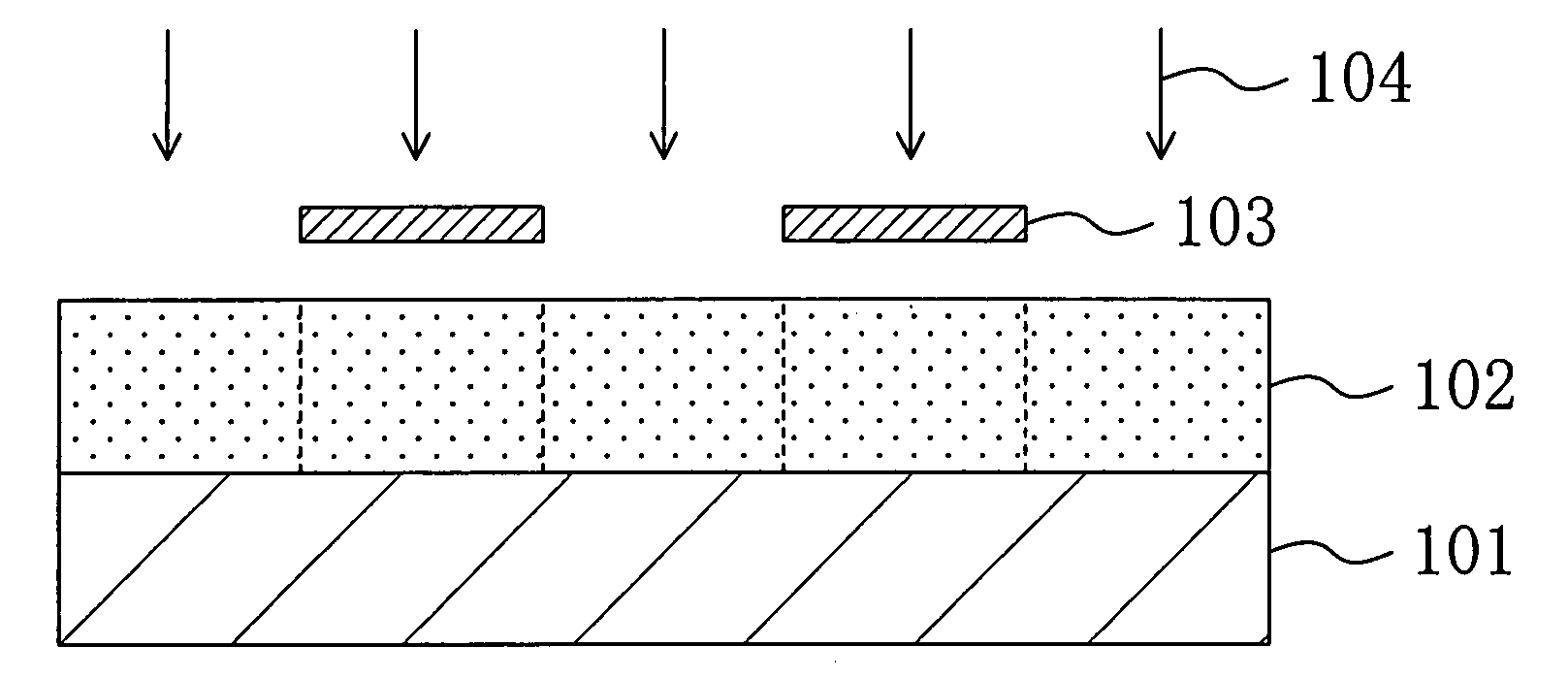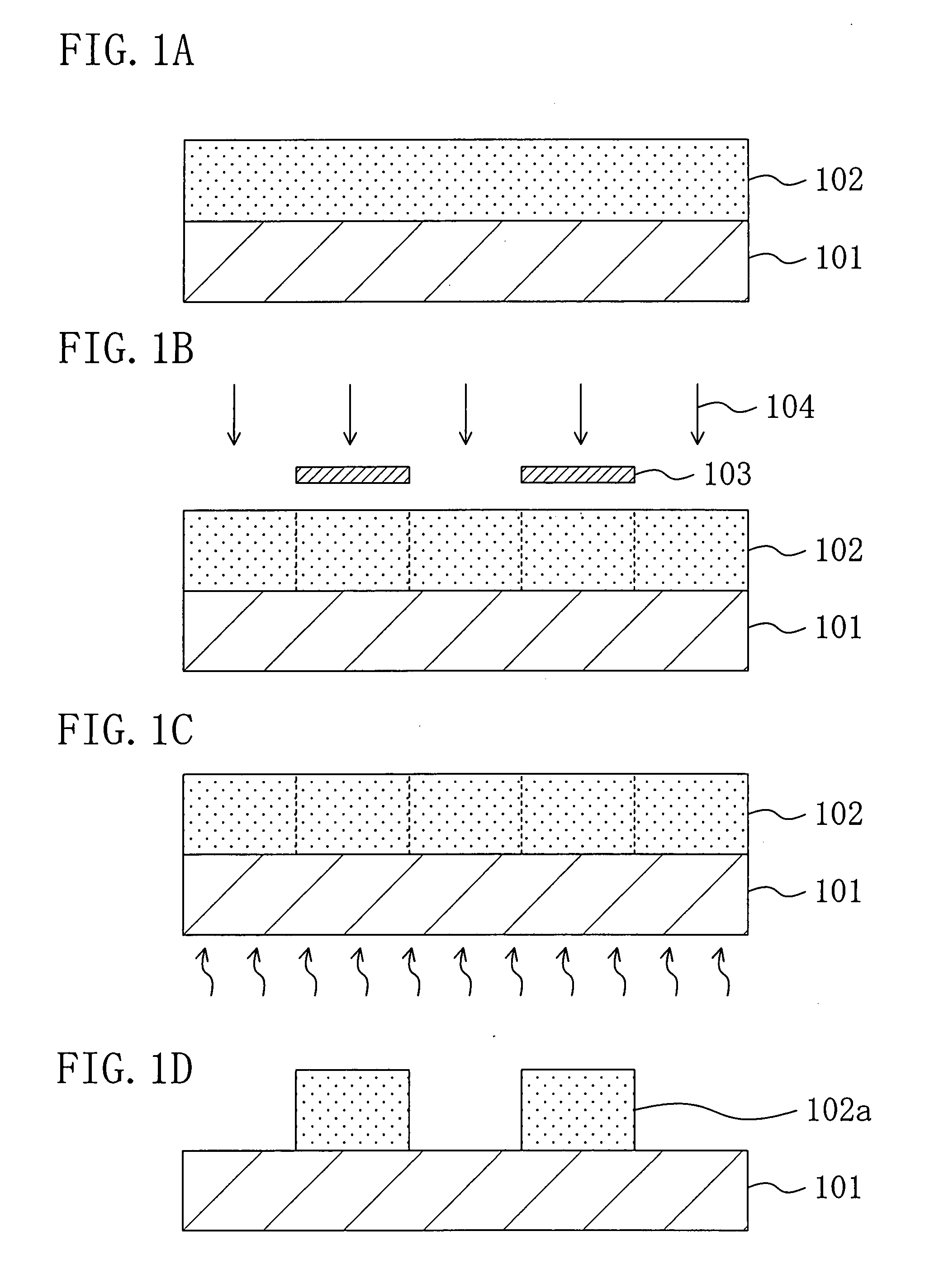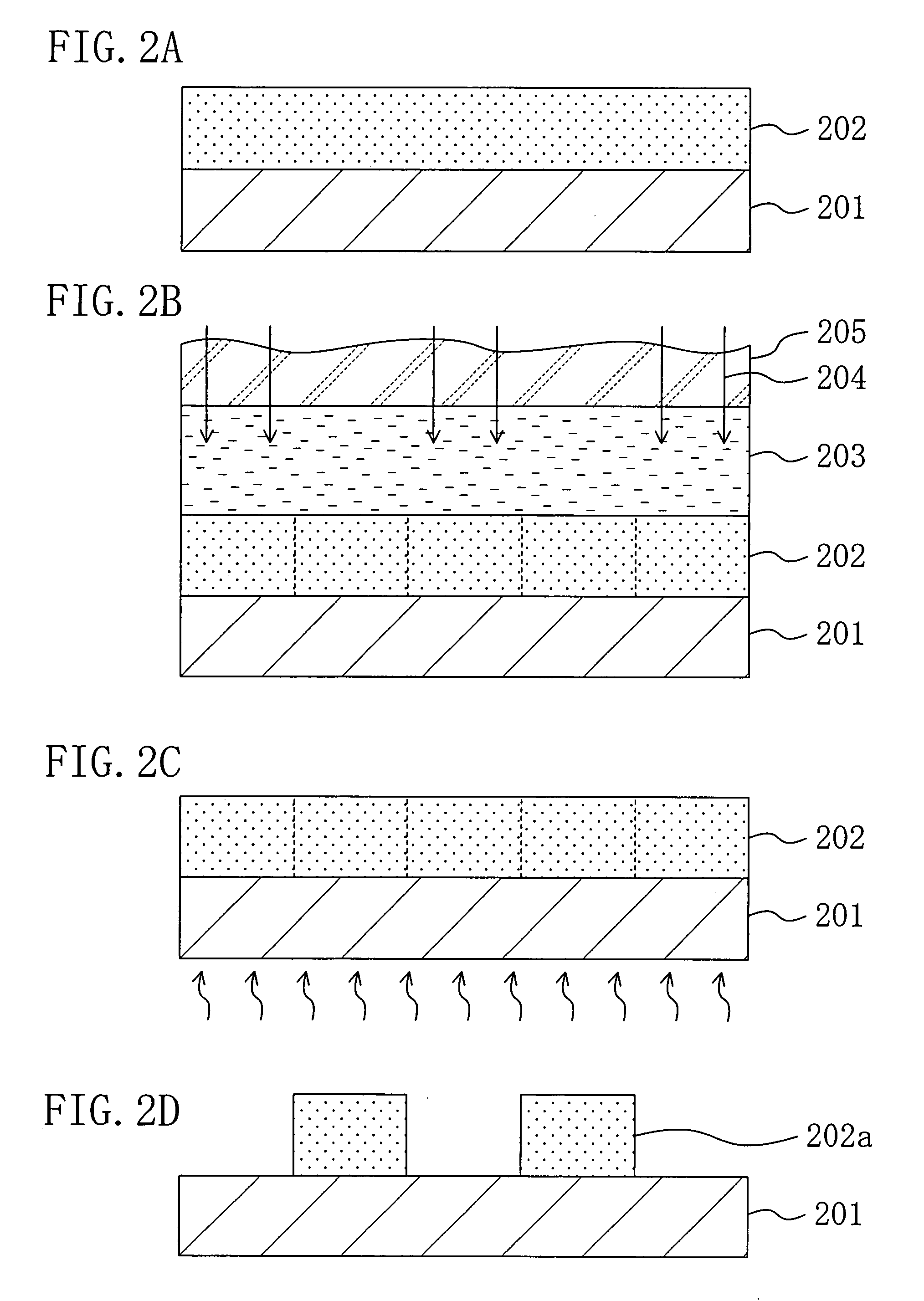Resist material and pattern formation method using the same
- Summary
- Abstract
- Description
- Claims
- Application Information
AI Technical Summary
Benefits of technology
Problems solved by technology
Method used
Image
Examples
embodiment 1
[0041]A pattern formation method according to Embodiment 1 of the invention will now be described with reference to FIGS. 1A through 1D.
[0042]First, a positive chemically amplified resist material having the following composition is prepared:
[0043]Base polymer: poly(vinyl di(adamantoxymethylsulfonamide) (30 mol %)-vinyl sulfonamide (70 mol %)) . . . 2 g
[0044]Acid generator: triphenylsulfonium trifluoromethane sulfonate . . . 0.06 g
[0045]Quencher: triethanolamine . . . 0.002 g
[0046]Solvent: propylene glycol monomethyl ether acetate . . . 20 g
[0047]Next, as shown in FIG. 1A, the chemically amplified resist material is applied on a substrate 101, so as to form a resist film 102 with a thickness of 0.35 μm.
[0048]Then, as shown in FIG. 1B, the resist film 102 is subjected to pattern exposure by irradiating with exposing light 104 of ArF excimer laser having NA of 0.85 through a mask 103.
[0049]After the pattern exposure, as shown in FIG. 1C, the resist film 102 is baked by using a hot pla...
embodiment 2
[0056]A pattern formation method according to Embodiment 2 of the invention will now be described with reference to FIGS. 2A through 2D.
[0057]First, a positive chemically amplified resist material having the following composition is prepared:
[0058]Base polymer: poly(vinyl di(adamantoxymethylsulfonamide) (30 mol %)-vinyl adamantoxymethylsulfonamide (5 mol %)-vinyl sulfonamide (65 mol %)) . . . 2 g
[0059]Acid generator: triphenylsulfonium trifluoromethane sulfonate . . . 0.06 g
[0060]Quencher: triethanolamine . . . 0.002 g
[0061]Solvent: propylene glycol monomethyl ether acetate . . . 20 g
[0062]Next, as shown in FIG. 2A, the chemically amplified resist material is applied on a substrate 201, so as to form a resist film 202 with a thickness of 0.35 μm.
[0063]Then, as shown in FIG. 2B, an immersion liquid 203 of water is provided between the resist film 202 and a projection lens 205. Under these conditions, the resist film 202 is subjected to pattern exposure by irradiating with exposing li...
PUM
| Property | Measurement | Unit |
|---|---|---|
| Nanoscale particle size | aaaaa | aaaaa |
| Nanoscale particle size | aaaaa | aaaaa |
| Nanoscale particle size | aaaaa | aaaaa |
Abstract
Description
Claims
Application Information
 Login to View More
Login to View More - R&D
- Intellectual Property
- Life Sciences
- Materials
- Tech Scout
- Unparalleled Data Quality
- Higher Quality Content
- 60% Fewer Hallucinations
Browse by: Latest US Patents, China's latest patents, Technical Efficacy Thesaurus, Application Domain, Technology Topic, Popular Technical Reports.
© 2025 PatSnap. All rights reserved.Legal|Privacy policy|Modern Slavery Act Transparency Statement|Sitemap|About US| Contact US: help@patsnap.com



